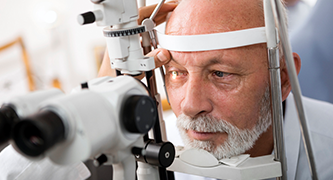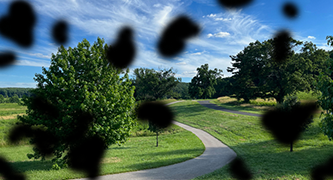At Holden Eye Care, Dr. Scaramuzzi diagnoses and manages Presbyopia, an age related near vision focusing problem. Presbyopia is an aging phenomenon that occurs as the crystalline lens loses its flexibility. Presbyopia begins at around age 40 and progresses until about age 65. From birth, until approximately the age of 40, the crystalline lens is both “crystal “clear and quite soft and flexible. This flexibility allows the crystalline lens to change its shape and alter its curvature in order to rapidly focus your vision at various distances-from far, to near, to arm's length, to far or near again. The focusing capacity of the crystalline lens gives you the ability to see things at all distances-a process called “accommodation”.
About the time that we enter our 40’s, the crystalline lens begins to stiffen. The stiffening of the crystalline lens makes it progressively more difficult to change focus or accommodate making it more and more difficult to see close up. Initially, this reduces our ability to see objects clearly at arm's length. As Presbyopia progresses it becomes more difficult to see reading material or objects close up. When this loss of flexibility occurs, it is called Presbyopia or “old eyes’.
As you begin to experience Presbyopia patients often tell us that their "arms are too short" requiring them to see up close by moving near objects and reading material farther away in order to bring them into focus and to see them clearly. It is important to know that Presbyopia affects everyone including those who have cataracts. As Presbyopia begins, people who have never worn eyeglasses find that they need reading glasses or bifocals in order to read and see up close. People who already wear glasses may need bifocals or trifocals in order to see up close and have comfortable near vision.









